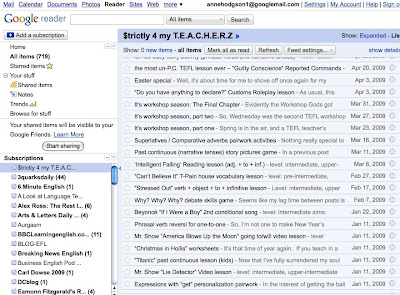I think this video says it all....
Don't worry if you missed the Web 2.0 starting gun. I think most folk who are are over thirty did, but we can still catch up if we want to!
A blog reflecting on how to use free online technology in teaching English as a foreign language.
If you sometimes use a video camera in the classroom, you've probably hit the same problem as me, namely it takes quite a lot of time to set everything up and familiarise yourself with the equipment (especially if you teach in different companies and have to use different TVs and DVD players or video players).

If that's the case, maybe you ought to look into buying The Flip - a video camera that's simple to use - and easy to carry around.
I've decided to get one myself, so watch this space to find out more about using it in the classroom.
Here's a link to blog written by an EFL/ESP teacher called Jeremy Day aimed at those of us who teach ESP (English for Special/Specific Purposes)
Specific EnglishIt's a relatively new blog, but it already has some brilliant tips and links on it and I wouldn't be surprised to see it being 'followed' by many an ESP teacher in the not too distant future.

"ELT teachers who are simply too chicken to try out some of the new media and technology tricks in their classrooms while the Digital Natives progressively enter the market... A lot of them are whining about whether or not it’s good teaching practice or just flash and dash. However while they continue to be afraid, they’re missing out on what’s on the other side and in the end, consoling themselves with friends who are equal Luddites, will find themselves replaced by the those who can."
Here's a link to a site which lists and has links to almost 3,000 tools (most of which are free) 'for learning'.
Centre for Learning & Performance Technologies
I'm not sure all the tools are for learning, but many of them are very useful for teachers.
And here's the site's top 100 learning tools for 2009.
